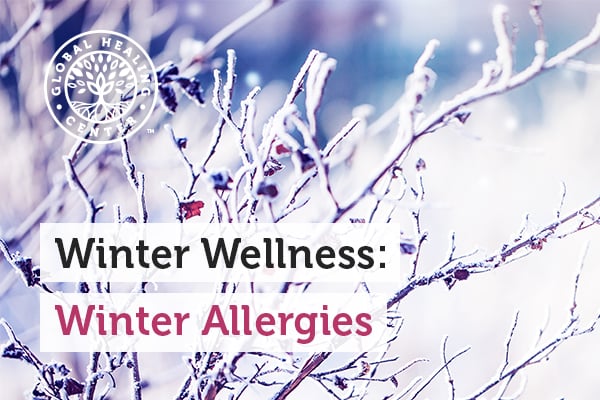
Pollen, mildew, dust — to many people, they’re essentially harmless. For those with allergies, they are the triggers that send their immune system into overdrive. Allergies are a malfunction of the immune system that causes it to be hypersensitive to stimuli. When the immune system is triggered, immunoglobulin E (IgE), a type of antibody, signals for the release of histamines. Histamines, which tell mucous membranes to produce mucus and cause blood vessels to dilate, are the catalyst for the inflammation that produces watery eyes, runny nose, and other symptoms we refer to as allergies. You may be familiar with antihistamines — medications that are marketed for the relief of allergy symptoms.
Allergies are more common now than ever before, especially among children,[1] and human behavior may be to blame. Humans have a habit of disinfecting and sanitizing almost everything. Cleanliness isn’t a bad thing, but this practice has tremendously reduced human exposure to the microbes and other impurities that can actually train and strengthen the immune system. Without routine exposure, the immune system doesn’t develop properly and becomes hypersensitive to substances that would otherwise register as benign. The “hygiene hypothesis” might explain why modern humans have more allergy triggers and why allergy rates are on the rise. In a very short period of time, from an evolutionary perspective, our exposure to "grime" has plummeted, leaving our immune systems less developed and less intelligent.
It’s probably safe to say that allergies have affected humans as long as humans have been around, but it wasn’t until 1906 — shortly after the scientific community’s acceptance and first forays into immunology — that a man named Clemens von Pirquet published research that explained the idea. His ideas were not well received. In fact, Pirquet’s contemporaries lambasted his research. Despite their criticism, he continued his work and his campaign to establish the terminology we still use today.[2]/p>
Allergies Can Strike During Winter
You might think winter is the season that’s free and clear of allergy triggers but that’s not necessarily true. Even in the dead of winter, when nothing is blooming outside, your indoor surroundings may set you off. Firing up the furnace releases a flurry of old dust, dander, and mold spores into the air. And, consider this — during the winter, you’re more apt to spend your time huddled inside with the doors and windows sealed tightly. When ventilation is reduced, allergens concentrate and inflame allergies.
Winter allergy triggers may also extend outdoors. Certain trees like mountain cedar (Juniperus ashei) release pollen during the winter that can be the catalyst for a runny nose or itchy eyes. If you live in a cold climate, you may be affected by snow mold. You read that right, snow mold. A blanket of snow can accommodate the growth of grey snow mold (Typhula spp.) or pink snow mold (Microdochium nivalis).[3] And, for people who are allergic to conifers, natural, fresh-cut fir trees and decorative evergreen wreaths are likely to produce more concerns than holiday cheer.[4]
Symptoms of Winter Allergies
The most common symptoms of winter allergies include congestion, sneezing, runny nose, red eyes, and changes in mood.[5] Although it might be easy to confuse the symptoms of winter allergies with a “head cold" there are key differences. If you have a cold, you’ll likely have a fever, body ache, or a sore throat. Itchy, watery, or swollen eyes also distinguish allergies from the common cold.[6] The duration of your symptoms is another tell; whereas allergies may be ongoing, a cold generally lasts 3-4 days.
Tips for Minimizing Winter Allergy Symptoms
Without a proactive approach, allergies can interfere with your ability to enjoy the winter months. It’s crucial to identify your triggers, then do your best to avoid them. Below are a few trigger-specific tips to keep winter allergies from spoiling your season.
Get Rid of the Mildew
Mildew loves a warm, moist environment and that means that showers and washing machines are mildew magnets. Towel drying them after every use can reduce the proliferation of mildew. If your bathroom (or garage) has a ventilation fan, use it. A dehumidifier is helpful if you have trouble keeping humidity levels in your house below 40%.[7] Essential oils like tea tree or eucalyptus, which are natural mold killers, can also help prevent concerns.
Keep Dust, Dander, and Dust Mites at Bay
Dust, dander, and dust mites are everywhere and almost impossible to escape but an indoor air purification device can actively capture them. Use a vacuum equipped with a HEPA filter at least once a week. To reduce dust mites and dander, use mite-proof sheets on your beds and don’t allow pets in your bedroom. Wash bed linens in hot water to kill dust mites. Avoid down comforters — they provide a friendly environment for microscopic pests.[8]
Actively Avoid Winter Pollen
If you live in the frozen tundra, pollen might be less of a concern. But, if you live in an area with winter blooming trees, and many people do, tree pollen is tough to escape. The best strategy is to have a pollen-free home. Keep doors and windows closed and seal gaps with weather stripping tape. Keep pollen out of your car by setting the air to circulate rather than bringing in air from outside.
Stay Allergy Free This Winter
Allergies can strike anytime but if you stay cognizant of your allergy triggers and proactively avoid them, they don’t have to disrupt your life. There are many ways to stay healthy during the winter, what methods help you control your allergy symptoms? Tell us below!
References (8)
- Gross, Michael. “Why Did Evolution Give Us Allergies?” 25.2 (2015): R53–R55. Web. 13 Dec. 2016.
- Igea, J. M. “The History of the Idea of Allergy.” Allergy 68.8 (2013): 966–973. Web. 13 Dec. 2016.
- Ash, Cynthia. “Snow molds in lawns.” University of Minnesota. 2016. Web. 13 Dec. 2016.
- Wyse, Derek M., and David Malloch. “Christmas Tree Allergy: Mould and Pollen Studies.” CMAJ 103.12 (1970): 1272–1276. Web. 13 Dec. 2016.
- Sansone, Randy A., and Lori A. Sansone. “Allergic Rhinitis.” Innovations in Clinical Neuroscience 8.7 (2011): 12–17. Web. 13 Dec. 2016.
- “Seasonal allergies: Symptoms, diagnosis, and treatment | NIH MedlinePlus the magazine.” NUH Medline Plus. 2011. Web. 13 Dec. 2016.
- “Common Seasonal Allergy Triggers.” American College of Allergy, Asthma & Immunology. ACAAI Public Website, 30 Nov. 2016. Web. 13 Dec. 2016.
- “Winter allergy tips - living with winter allergies.” National Jewish Health. 1 Dec. 2011. Web. 13 Dec. 2016.
†Results may vary. Information and statements made are for education purposes and are not intended to replace the advice of your doctor. If you have a severe medical condition or health concern, see your physician.








